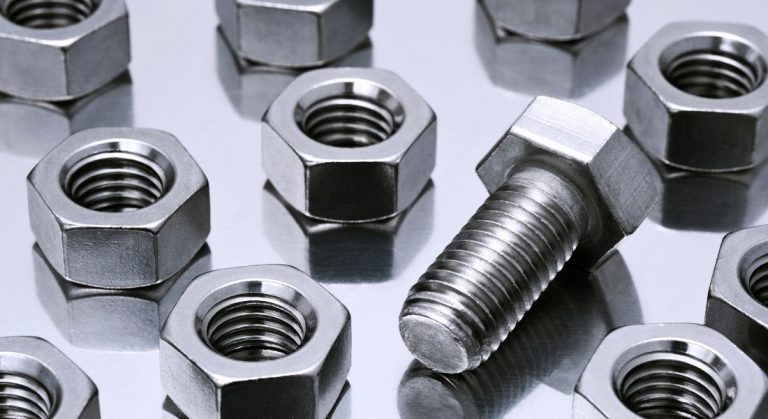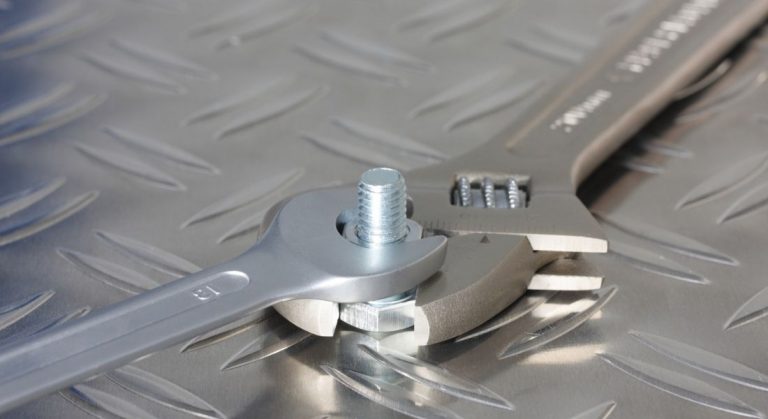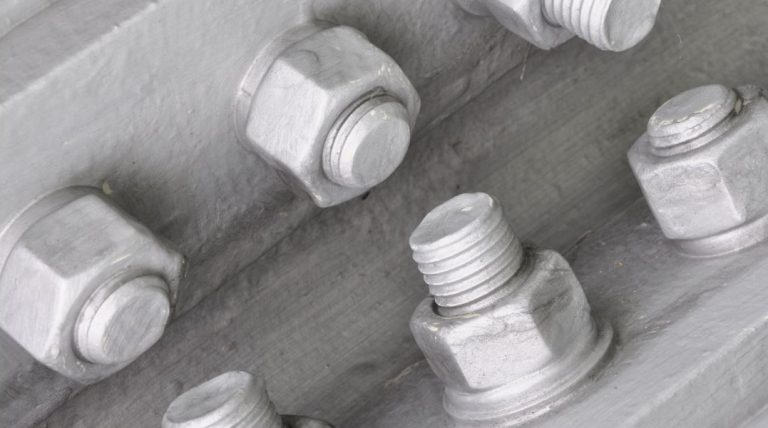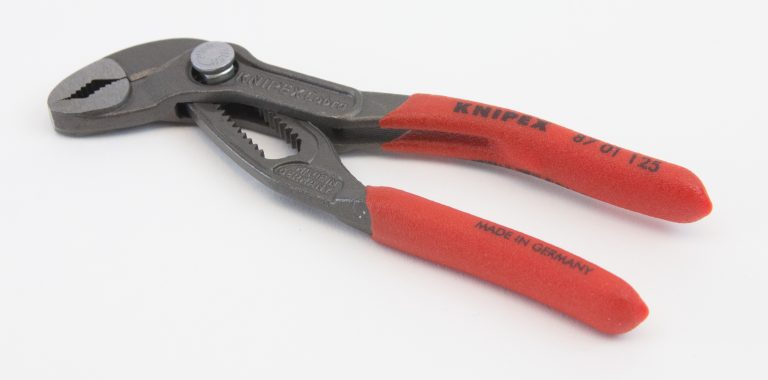Hexagon nuts using guide – Ding Fastener – fastener distributors
Hexagon nuts are one of the most common nuts and can be used with anchors, bolts, screws, studs, threaded rods, and any other fasteners with machine threads.
Hex is an abbreviation for hexagon, meaning that they have six sides. Hexagon nuts are also called: finished hexagon nuts and full hexagon nuts. Lock washers with hexagon nuts can be used.


UNC and UNF threaded hexagon nuts
The thread is the standard right-hand series unified and imperial coarse (UNC, unified national coarse) or unified imperial fine (UNF, unified national fine). Left-hand hex nuts are also available; see nuts on the left. The size of a hex nut refers to its nominal thread diameter.
The tools for installing Hexagon nuts
Usually, the size ranges from 1/4” to about 2 1/2”. Dimensions are specified in inches, usually decimals rather than decimals. Table 1 lists the width and thickness between faces and corners.
The width of the size of the wrench, which is 1.50 to 1.75 times the nominal size of the hexagonal nut, and the thickness is 0.850 to 0.875 times the size. 5/8” and smaller nuts have double (top and bottom) chamfers (chamfers); larger sizes may be double chamfered or have a washer surface support surface (bottom) and a chamfered top.
Nuts, The bolt/screw must be long enough to have at least two full threads extending beyond the surface of the nut after tightening.
On the contrary, there must be two full threads exposed on the nut head side to ensure that the nut can be tightened correctly.
Unlike stainless steel and stainless steel, such as brass, steel hexagon nuts have different strength “grades”; designated by SAE (Society of Automotive Engineers).


Grade or class of hexagon nuts
Grade 2 is the lowest, both in terms of strength and cost; Grade 5 provides moderate resistance; Grade 8 is the highest SAE level and usually the highest price. Do not replace the graduated hex nut with a nut of lower grade or strength.
Which material of hexagon nut is better
The mark on the surface identifies the grade. Common materials include steel (electroless and electroplated-see finishes below for more information), stainless steel, brass, silicon bronze, aluminum, and nylon.
Steel is still the cheapest material, followed by stainless steel; copper alloys (such as brass and silicon bronze) are the most expensive.
Common finishes for steel are zinc plating, and hot-dip galvanized. Zinc is the most popular and cheapest commercial coating with moderate corrosion resistance.


Hot-dip galvanizing hexagon nut can work for long time
Hot-dip galvanizing is a thick layer of zinc to prevent corrosion in harsh environments.
However, when there is a corrosion problem, stainless steel is a better choice.
Unless it is immersed in saltwater without free oxygen, it will suffer severe pitting corrosion. Uncoated and uncoated steel hexagon nuts are also available, which are called smooth surfaces and easy to rust. Not all types are suitable for all materials and finishes.
Always follow the manufacturer’s recommendations for reuse of nuts, thread lubricants/locking compounds, and torque values.
It is recommended to combine the materials and finishes of hex nuts, washers, and bolts/screws.
When using hot-dip galvanized bolts and hot-dip galvanized nuts, which have oversized threaded to accommodate the thick zinc layer on the bolts.


Tightening and using ordinary or galvanized finish nuts on hot-dip galvanized bolts will result in an overtight fit).
Stainless steel hex nuts and bolts/screws used together are prone to thread cracking and jamming.
Although it may not be completely preventable, it can be greatly reduced. A thread lubricant is the most effective method. Or, stainless steel alloys with different hardness, such as 316 nuts and 304 bolts, are less likely to crack.
If you need a thinner nut, please choose a lock nut. For smaller sizes (diameter, width, and thickness), look for machine screws and nuts. For wider and thicker nuts, consider using heavy hex nuts.
For specifications of hx neuts, please refer to ASME B18.2.2.
| Size | Diameter* | Height | ||||
| Hex Nut | Machine Screw Nut | Hex Nut | Jam Nut | Nylock Nut | Machine Screw Nut | |
| #0 | – | 5/32″ | – | – | – | 3/64″ |
| #1 | – | 5/32″ | – | – | – | 3/64″ |
| #2 | – | 3/16″ | – | – | 9/64″ | 1/16″ |
| #3 | – | 3/16″ | – | – | 9/64″ | 1/16″ |
| #4 | – | 1/4″ | – | – | 9/64″ | 3/32″ |
| #6 | – | 5/16″ | – | – | 11/64″ | 7/64″ |
| #8 | – | 11/32″ | – | – | 15/64″ | 1/8″ |
| #10 | – | 3/8″ | – | – | 15/64″ | 1/8″ |
| #12 | – | 7/16″ | – | – | 5/16″ | 5/32″ |
| 1/4″ | 7/16″ | 7/16″ | 7/32″ | 5/32″ | 5/16″ | 3/16″ |
| 5/16″ | 1/2″ | 9/16″ | 17/64″ | 3/16″ | 11/32″ | 7/32″ |
| 3/8″ | 9/16″ | 5/8″ | 21/64″ | 7/32″ | 29/64″ | 1/4″ |
| 7/16″ | 11/16″ | – | 3/8″ | 1/4″ | 29/64″ | – |
| 1/2″ | 3/4″ | – | 7/16″ | 5/16″ | 19/32″ | – |
| 9/16″ | 7/8″ | – | 31/64″ | 5/16″ | 41/64″ | – |
| 5/8″ | 15/16″ | – | 35/64″ | 3/8″ | 3/4″ | – |
| 3/4″ | 1-1/8″ | – | 41/64″ | 27/64″ | 7/8″ | – |
| 7/8″ | 1-5/16″ | – | 3/4″ | 31/64″ | 63/64″ | – |
| 1″ | 1-1/2″ | – | 55/64″ | 35/64″ | 1-3/64″ | – |


